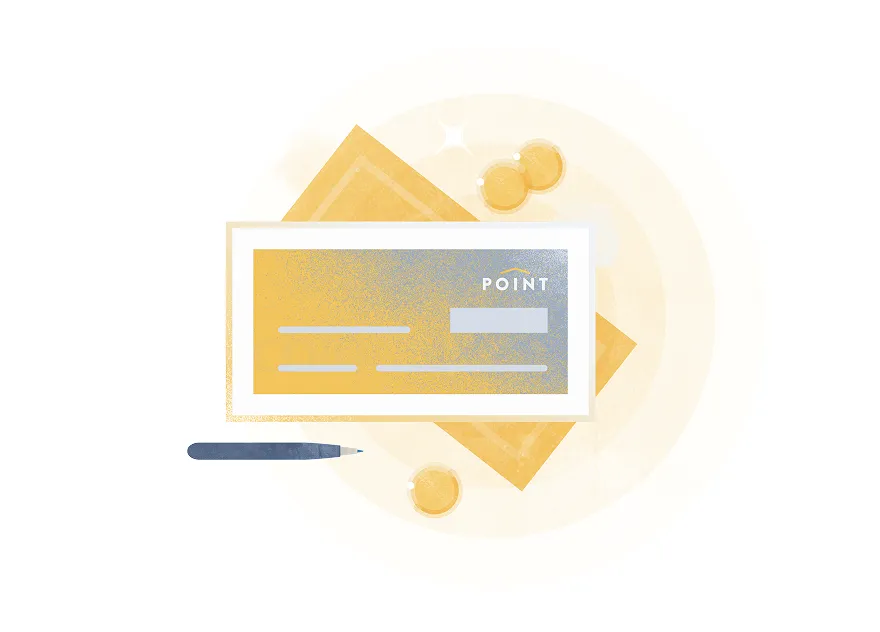As home prices have increased to record levels, more homeowners have equity that they can withdraw. Borrowers use this money for a variety of purposes, including home improvements, school tuition, credit card debt consolidation, and more.
However, many homeowners are unsure of how much they can borrow. If you’re wondering, “How much can I borrow from my home equity?” Here’s everything you need to know, including how to determine your borrowing power and five ways to tap your home equity.
How much equity can I borrow from my home?
With a rising real estate market, many homeowners don't know how much equity they have or how much they can borrow. The amount of equity you can borrow depends on several key factors. Lenders cap your borrowing power based on your home’s value, your current mortgage balance, the type of loan, your credit score, your debt-to-income ratio, and your ability to repay the money.
The type of loan is also a big factor because it determines the repayment terms, including the length of the loan, maximum loan amount, interest rate, and how minimum monthly payments are calculated.
How to determine your borrowing power
Two variables to consider are how much equity you have in your home and your loan-to-value ratio. Here's how to calculate these two critical factors before shopping for your next loan.
Calculate your home equity
Knowing how much equity you have in your home helps you determine how much equity you can borrow. While most banks will not let you borrow 100% of your home's equity, this is the first step in calculating your maximum loan amount.
If you don't have access to a home equity loan calculator, you can calculate your home equity in three easy steps:
- Determine your home's value. You can have your home appraised, but you'll typically pay between $300 and $500 or more for an appraisal. Instead of spending money for an appraisal, use free online valuation tools at Zillow.com, Realtor.com, and Redfin.com. While these values aren't exact, their estimations are usually in the ballpark of what your home is worth.
- Find your mortgage balance. Review your latest mortgage statement to find the balance on your home loan. If you have an existing HELOC, home equity loan, home equity investment (HEI), or similar loan, include that balance in your total mortgage debt as well.
- Subtract your mortgage debt from your home's value. Your home equity is the difference between what your home is worth and what you owe on it.
Your home equity is the maximum loan amount that a lender may let you borrow. However, other factors come into play, like the bank's maximum loan-to-value ratio.
Calculate your loan-to-value ratio
A home's loan-to-value (LTV) ratio is the comparison between your mortgage debt and your home's value. The maximum LTV ratio varies based on which type of loan you're applying for and the lending guidelines of the bank. For example, a primary mortgage may go up to 100% LTV, while a home equity loan typically maxes out at 80% to 90%.
To calculate your home's loan-to-value (LTV) ratio, simply divide your mortgage balance by your home's value.
A $400,000 home with a $280,000 mortgage balance has a 70% LTV. If the lender has a maximum LTV of 80% for a home equity loan, then you can borrow up to $40,000.
Lenders also look at your combined loan-to-value ratio, or LTV, based on your total mortgage balance that includes your proposed loan amount. This new combined LTV must be under the bank's maximum LTV ratio.

Shop around and prequalify
Since each bank has different lending guidelines and maximum LTV ratios, it pays to shop around. While one bank may have an 80% LTV cap on home equity loans, another bank may lend up to 90% of your home's value.
Getting prequalified by different lenders sets realistic expectations for how much you can borrow. The lender may do a hard inquiry or a soft inquiry to check your credit and perform a preliminary review of your income and expenses to estimate your maximum loan amount based on different types of loans.
Ways to tap into your home equity
There are many different ways to tap into the equity in your home — we’ll explore these more in detail below.
HELOC
A home equity line of credit (HELOC) is a flexible line of credit that has a maximum borrowing amount. It has a variable interest rate, but you'll only pay interest on the amount you borrow. Monthly payments are interest-only, but you can pay extra to reduce your balance. However, if interest rates rise, your payment will go up.
As you pay down the balance, the monthly payment on equity lines of credit decreases. Additionally, your available credit increases as you reduce your balance. This frees up available credit that you can borrow in the future. The timeframe during which you can withdraw money from home equity lines is known as the "draw period," and it typically lasts 10 years.
At the end of the draw period, the remaining mortgage balance converts into an amortizing loan (normally 20 years) with a fixed monthly payment based on the current interest rates.
Home equity loan
Banks, credit unions, and online lenders offer home equity loans. These loans tap into your home's equity by providing a lump sum of cash that is repaid over a specific loan term. They offer a fixed interest rate and fixed monthly payment, which makes them easier to budget for since your payment won't change for the life of the loan. However, if you need to borrow more money, you'll need to replace the loan with another one. When you make the final payment, the loan is paid off in full.
HEI
A home equity investment (HEI) provides a lump sum of cash upon approval. However, unlike home equity loans and home equity lines of credit, you don't need to make monthly payments. Instead, the lender shares in the future appreciation of your home's value. You’ll have a flexible 30-year term, or you can repay the investment anytime penalty-free when you refinance, sell your home, or use another source of funds.
It is generally easier to qualify for a home equity investment than other mortgage loan products. They do not require proof of income, and you don't need perfect credit. You can borrow up to $600,000 from your home equity without needing to make any payments for up to 30 years.
Cash-out refi
A cash-out refinance replaces your existing mortgage with a new one with a higher balance. These loans are appealing when you want to spread out the costs of your borrowing and want a simplified mortgage with one monthly payment. Compared to home equity loans and home equity lines of credit, a cash-out refinance tends to have higher closing costs. You can subtract them from your loan proceeds or select a higher rate to cover the costs.
One of the major downsides of a cash-out refi is "resetting" the repayment clock on your mortgage. For this reason, many borrowers choose a 15- or 20-year mortgage instead of a 30-year mortgage, enabling them to stay on the same repayment schedule. While shorter loan terms result in a larger payment, they can save thousands in interest costs over the life of your mortgage.
Reverse mortgage
A reverse mortgage is a lending product for older homeowners with larger amounts of home equity. These loans require that the home be your primary residence and that you are at least 62 years of age. The mortgage replaces your existing home loan with one of three different ways to access your home equity. A reverse mortgage typically has the highest closing costs of any mortgage product.
You may choose a lump sum of cash, a monthly annuity payment, or a line of credit. In most cases, you don't need to make monthly payments toward the mortgage, but you are still responsible for property taxes, homeowners' insurance, and regular upkeep of the home.
Typically, you must live in the house for the majority of the year. If you travel frequently, move into a nursing home, or move somewhere else (like moving in with family), the reverse mortgage may become due and payable immediately. When this happens, you must pay off the mortgage by making a large payment, refinancing the property, or selling it.
Frequently asked questions
How do lenders decide how much equity I can access?
Lenders use numerous factors when determining how much equity you can access. The primary factors are your home's equity and the proposed loan-to-value based on your loan request. Additionally, the lender will review your credit score, income, monthly debt obligations, and other factors.
Can I borrow 100% of my home equity?
While some primary mortgage programs offer 100% LTV loans through a cash-out refinance, you generally cannot borrow all of your home's equity through a home equity loan or line of credit. Home equity loans and HELOCs typically max out between 80% to 90% of your home's value.
How much equity should I leave in my home?
Borrowing against your home equity can be risky since your home is at risk if you cannot make the payments. It is wise to maintain at least 20% home equity to protect yourself in case of a housing downturn or to absorb costs if you need to sell. This LTV ratio eliminates the need for private mortgage insurance (PMI) if you decide to refinance your mortgage if interest rates drop or you need to lower your monthly payments by extending your loan terms.

Final thoughts
With home prices changing, many homeowners wonder, "How much equity can I borrow from my home?" The answer depends on numerous factors, including your home's value, your existing mortgage balance, what type of loan you want, and the bank's lending standards.
Many borrowers use a cash-out refinance, home equity loan, or HELOC to get money from their home, but these loans require monthly payments. A home equity investment (HEI) can provide the cash you need without adding to your monthly bills. Review the pros and cons of each home loan type to figure out which one best fits your borrowing needs.
No income? No problem. Get a home equity solution that works for more people.
Prequalify in 60 seconds with no need for perfect credit.
Show me my offer
Frequently asked questions

Thank you for subscribing!
.webp)















